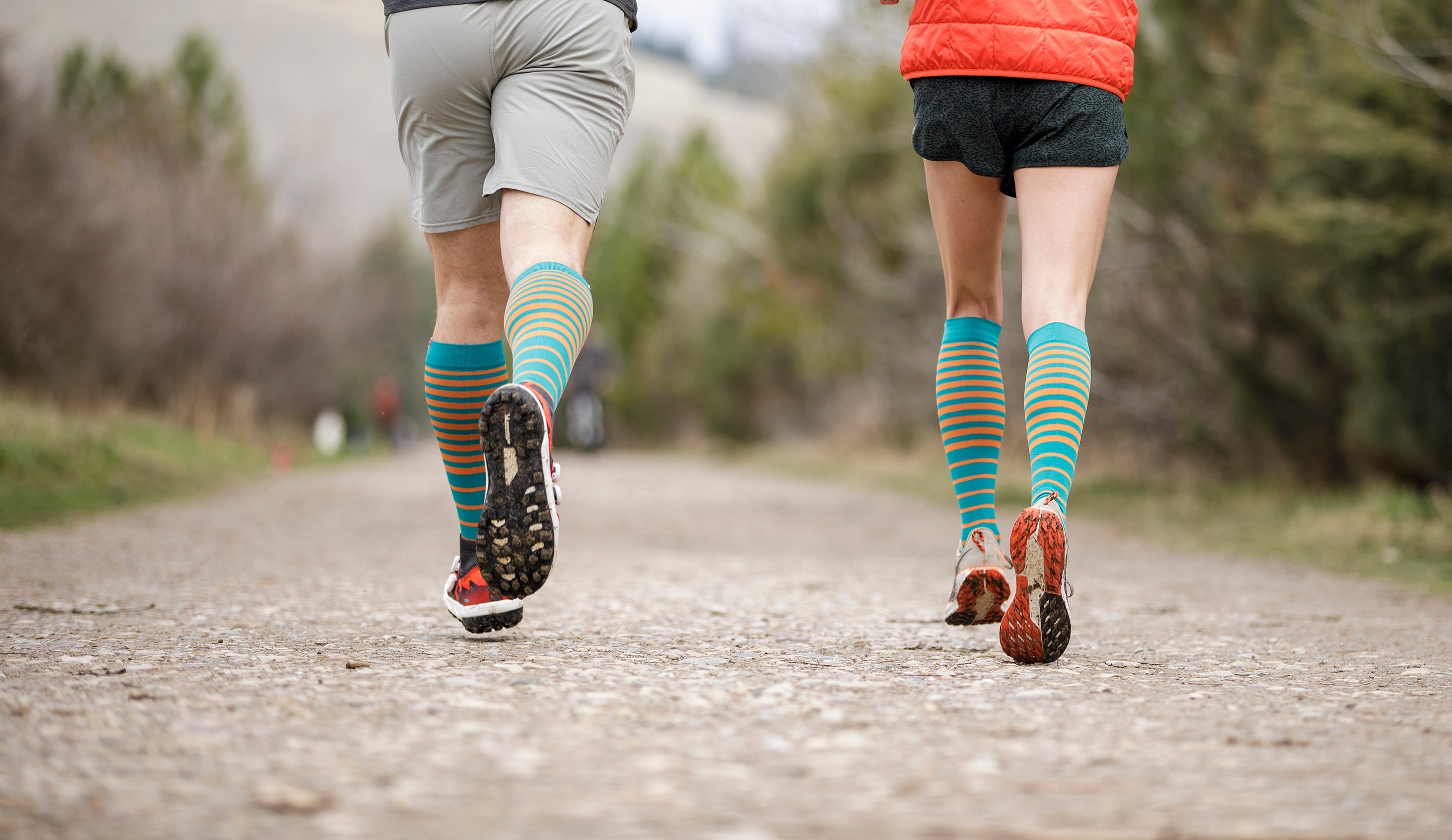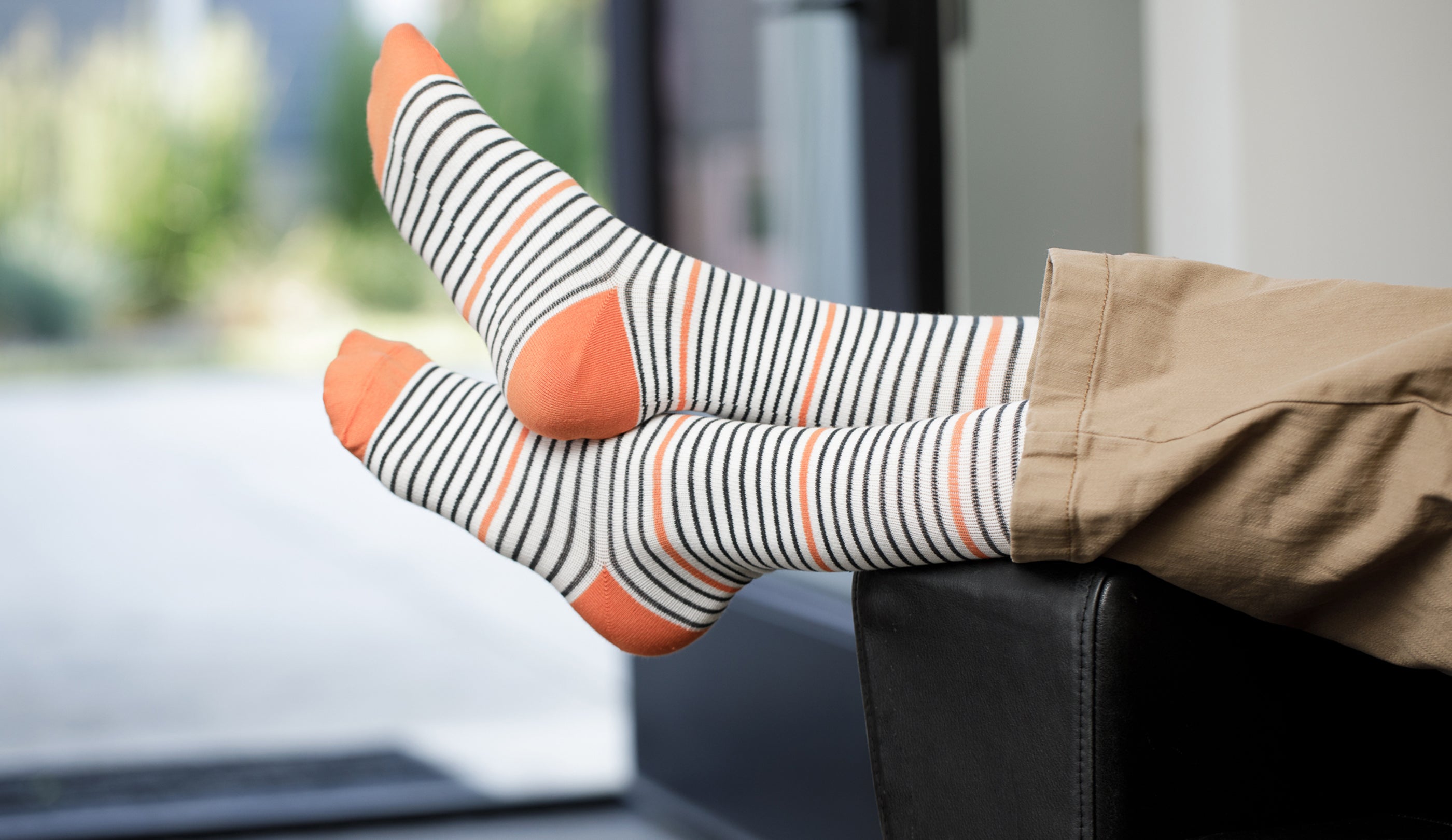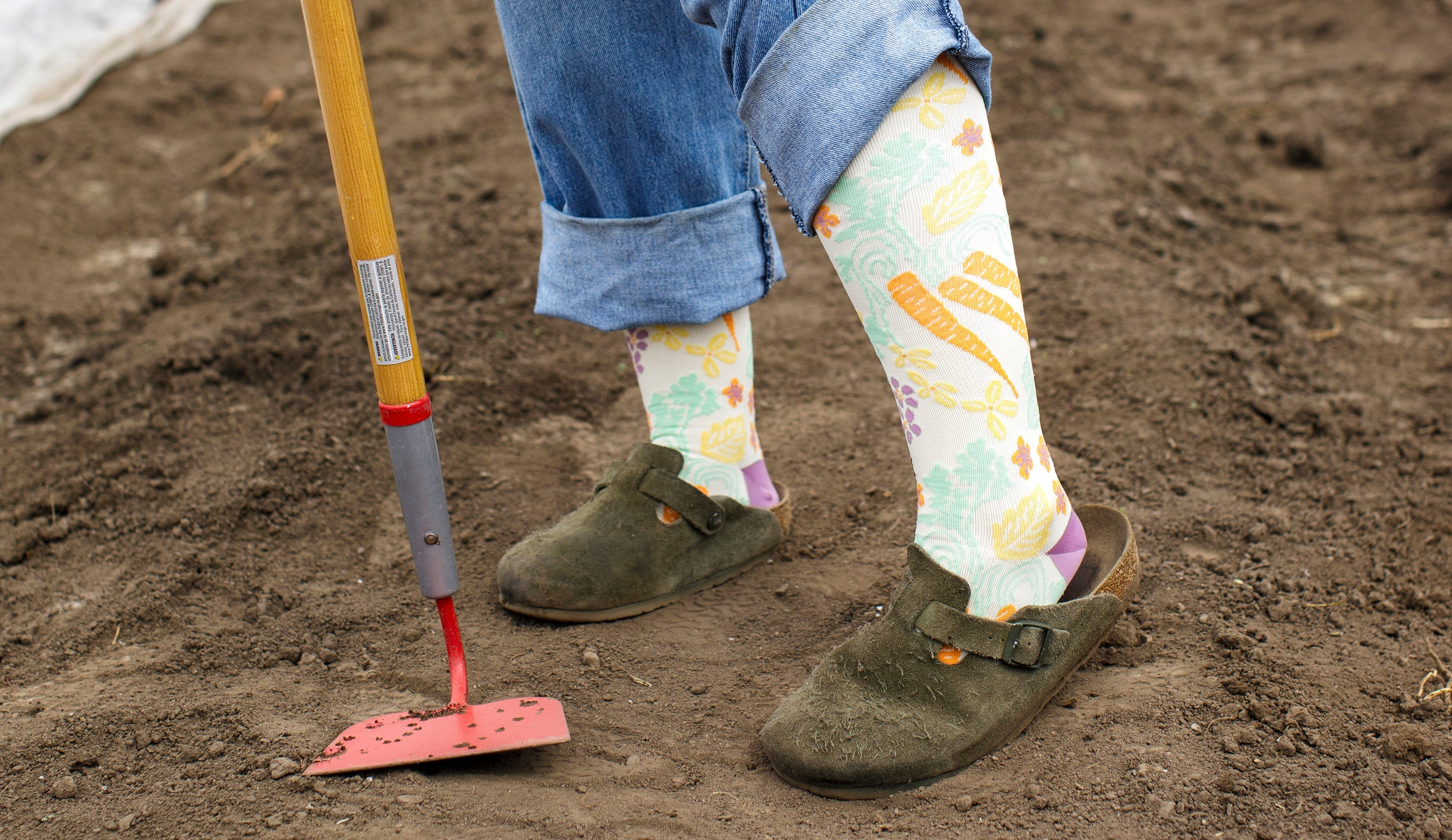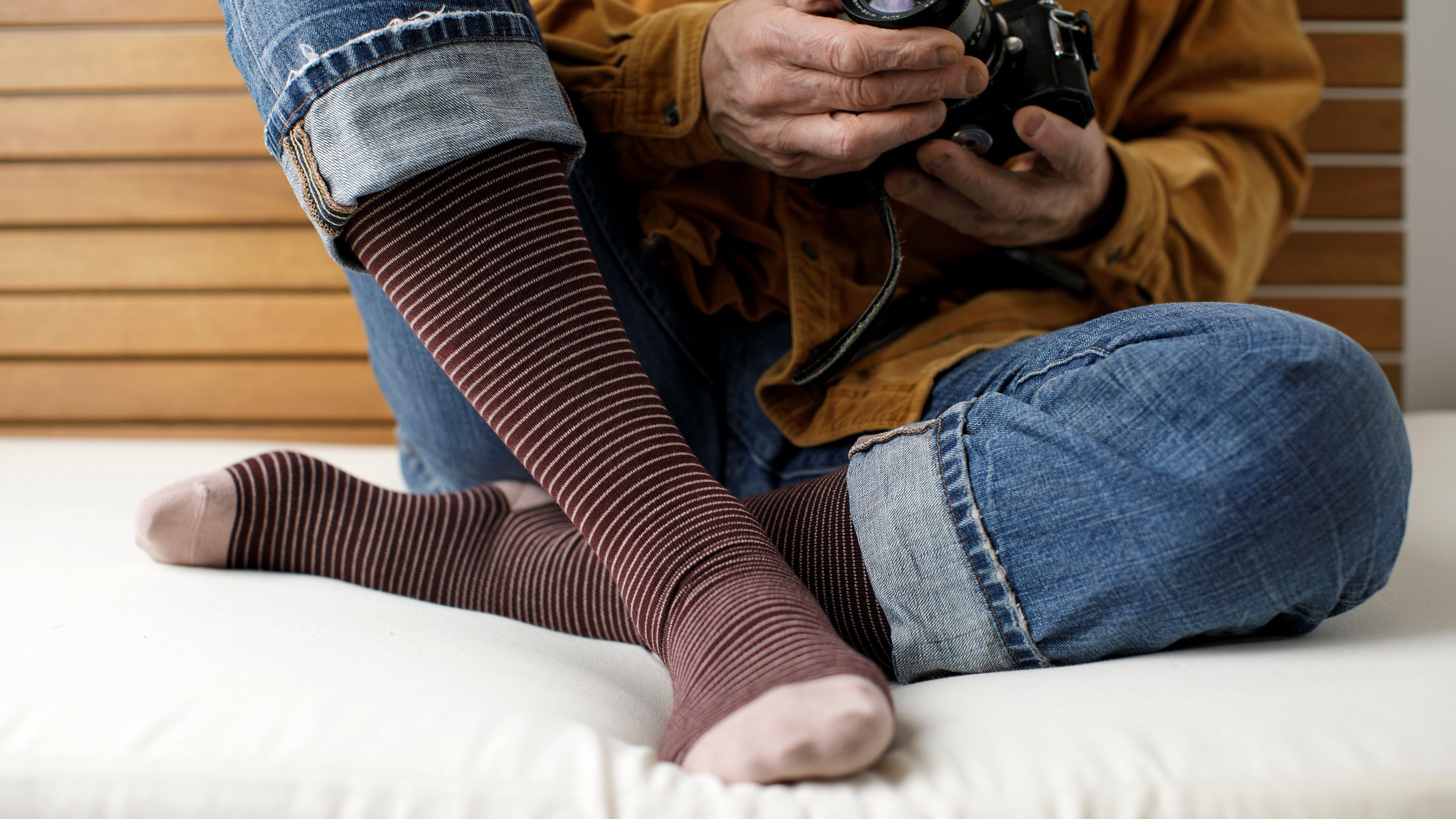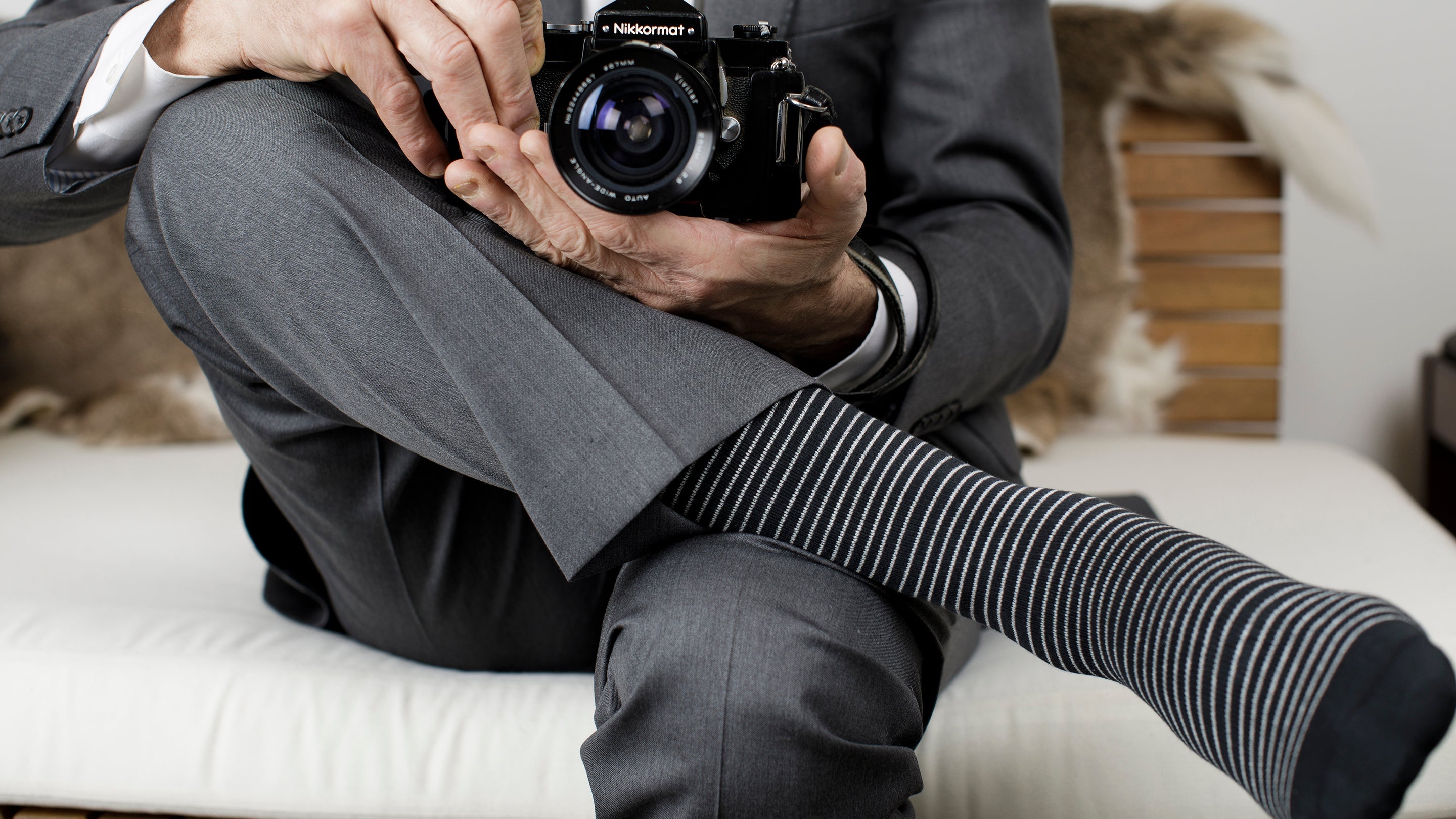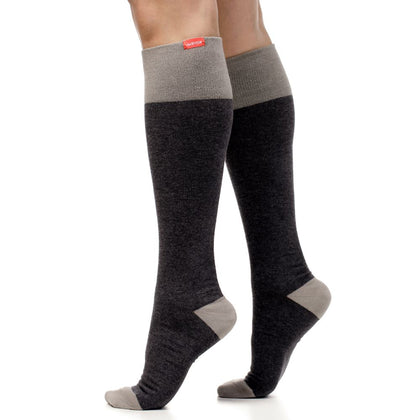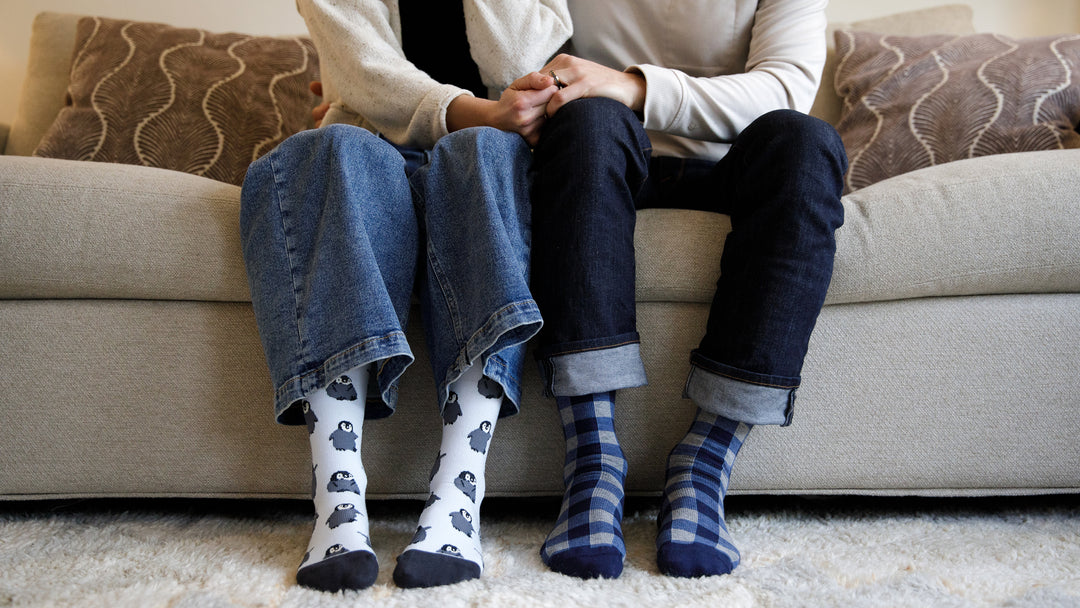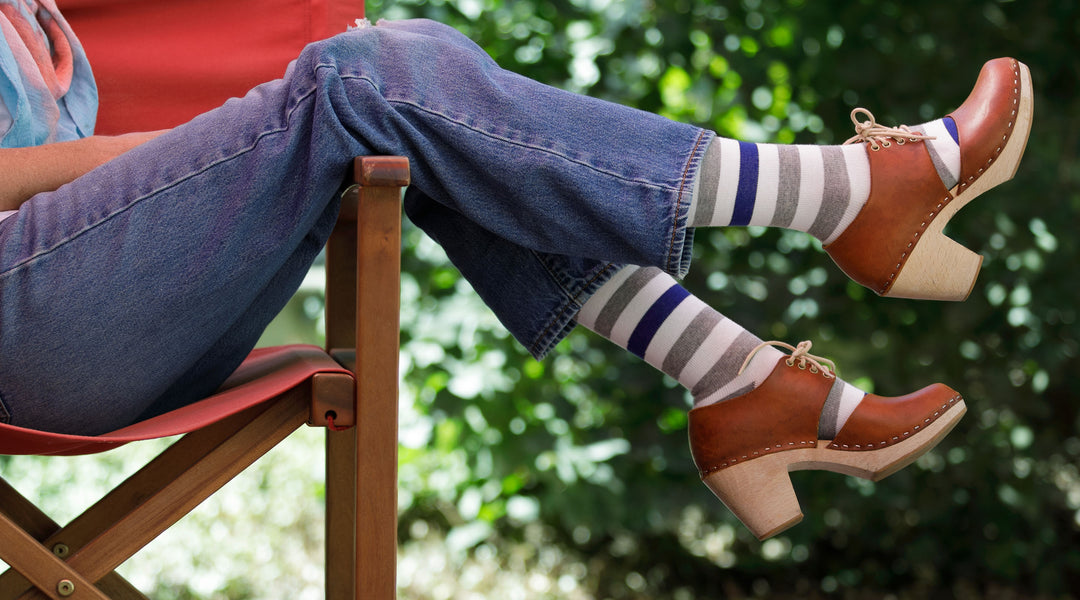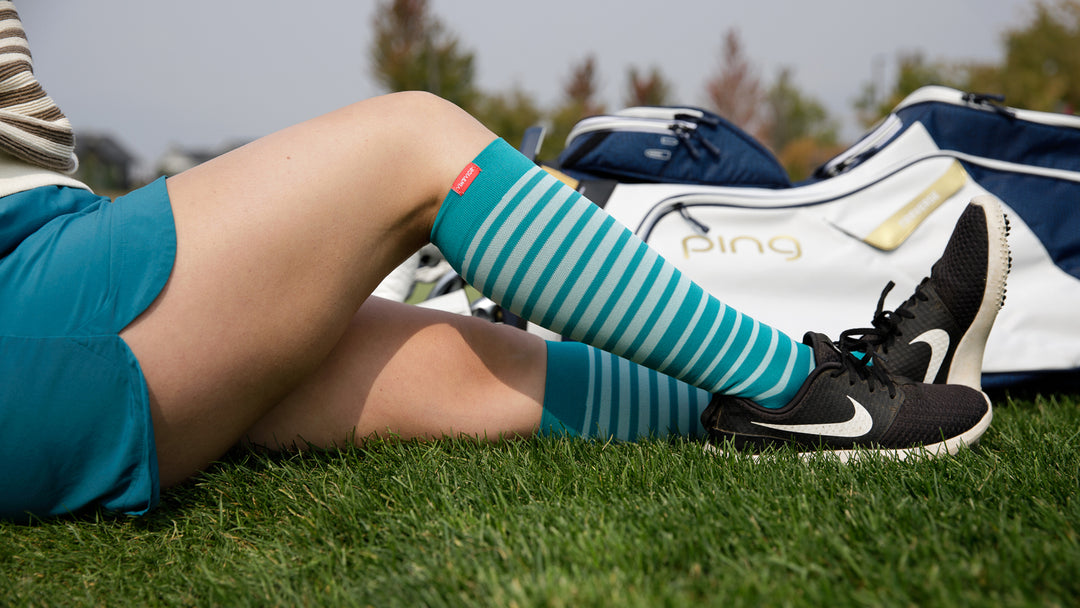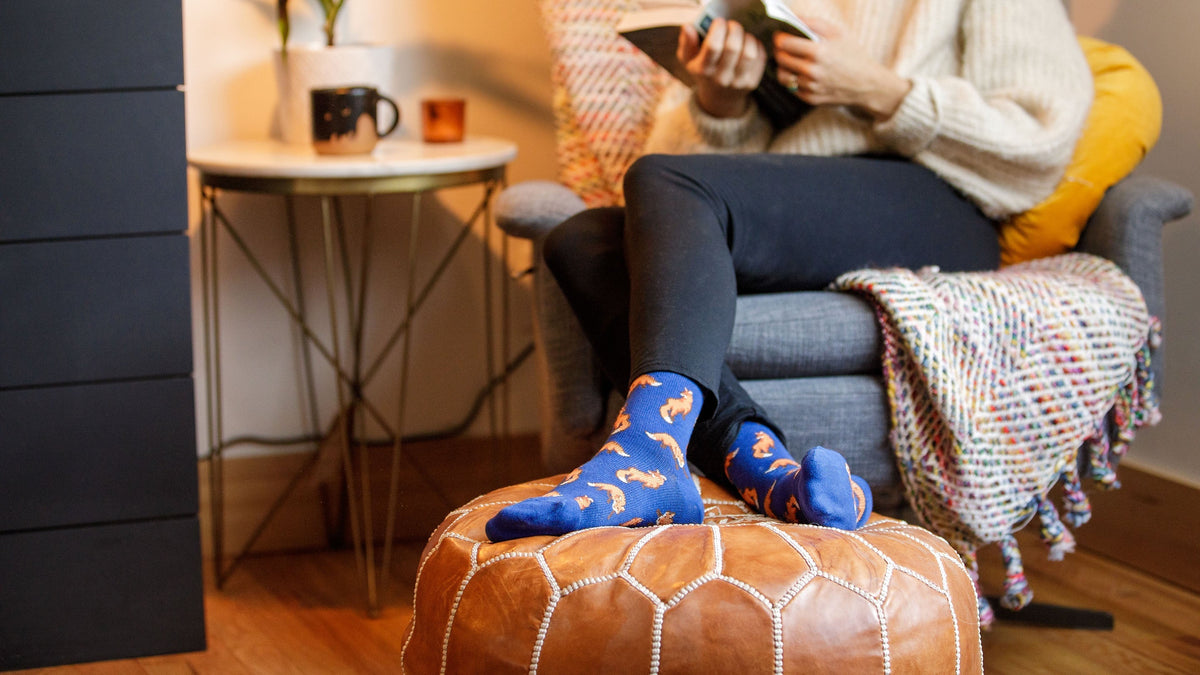

If you have a desk job, you probably spend most of your work time sitting down. According to the US Bureau of Labor Statistics, workers spend around 45 percent of their time sitting, but this varies depending on your job. The consequences include discomfort and swelling in the lower limbs, leading to all kinds of issues, from blood clots to pins and needles or constant pain.
Additionally, think of your commuting time. If you drive, you’re also sitting, while if you take public transport, it is likely that you’ll either be standing or sitting, without varying your position, for the whole time.
When you spend extended periods of time sitting or standing, without taking breaks to move your legs, you increase your risk of getting swollen feet and ankles. One study found that, if you have a desk job, you can sit for more than 6 hours a day. Almost 50% of people in that study reported discomfort because of prolonged sitting. Luckily, there are simple, natural ways to prevent discomfort in the feet and legs.

How to Prevent Feet Swelling While Sitting at Your Desk
Generally, varying your position is the best way to prevent legs and feet from swelling from inactivity. You can also follow some key advice on ergonomics, hydration, and diet, and wear compression socks.
1. Wear Compression Socks to Keep Blood Flowing
Graduated compression socks improve blood flow and prevent one of the key reasons feet swell, blood pooling in the extremities. When you sit for long periods of time, gravity pulls blood down into the lower legs and makes it harder for blood to leave, which can lead to edema (swelling). This becomes even more of a problem if you have poor circulation or suffer from other medical conditions that put you at risk (e.g., varicose veins).
Academic researchers confirm that compression as light as 15-20 mmHg (our casual, everyday wear range) will reduce the risk of feet swelling. Additionally, a key scientific paper looking at sitting for over 8 hours found that wearing compression garments prevented edema and improved blood flow. Conversely, that study found that not wearing compression socks significantly increased the volume of participants’ legs when they were seated at work.
Our Vim & Vigr collection of compression socks is graduated - this means they are tighter at the ankles and gradually release pressure upwards. Graduated compression stimulates venous return (the flow of blood back to the heart), while adding some refreshing, energizing massage to your muscles. Moreover, as you stand up and walk around, you’ll benefit from the tight grip on the feet and ankles, which can help your muscles pump fluid and blood out of the lower legs. Also, we have such a wide variety of designs and styles that you can match your socks or stockings to any outfit and look and feel your best.
Finally, if you prefer not to wear compression socks at work, there is some good news. Wearing them after work can also reduce swelling by at least 33% and up to 100%.
2. Move Every Hour to Improve Circulation
Exercise is a great relief and/or prevention tool to stop feet swelling from sitting at your desk. And it doesn’t mean doing a lot - just some gentle movement, such as easy walks to help your blood circulate and change positions. You can set yourself a Pomodoro alarm where you work in sprints of 25 minutes, followed by 5-minute quick breaks where you stand up, stretch a little, and walk around. The Mayo Clinic also recommends standing up and taking a break every 30 minutes. When you move, blood circulation is stimulated by muscle pumping and increased heart rate.
Another way to add movement is to take your calls while standing up or walking if you can. Additionally, combining use of compression socks and standing or walking breaks is very effective, according to a study that looked at different gradients of compression. Another report found that taking breaks from sitting can decrease inflammation by 40% but not taking any breaks from sitting can increase inflammation by 72% (as measured by interleukin-8 levels).
3. Elevate Your Legs for Quick Relief
Elevating the legs has been found to not only reduce soreness in your feet (as you take the pressure off the soles) but also improve circulation and reduce swelling and discomfort.
Feet swelling falls under the category of peripheral edema, which can be caused by chronic venous insufficiency. For patients suffering from a medical condition like this, it is highly recommended to elevate the legs regularly, while wearing compression stockings throughout the day.

4. Stay Hydrated to Reduce Water Retention
Hydrating properly has an impact on how well blood flows through the body. This can impact the risk of swelling, as the blood thickens and can be slowed down if you are dehydrated, which may cause it pool in your extremities. If you’re not moving at your desk, while keeping your feet pointing down the whole day, you need to make sure you drink enough water - or blood flow will be reduced.
Additionally, when you are dehydrated, your blood has a higher concentration of sodium. This makes your blood thicker and harder to move through your blood vessels, according to the Heart Foundation. Add the gravitational pressure to this and you can see why sitting can be so bad for blood flow. The solution? Keep a water bottle within reach, sip from it regularly, and make sure you hydrate throughout the day. The Mayo Clinic recommends that you have adequate fluid intake, which is:
- 15.5 cups (3.7 liters) of fluid per day for men
- 11.5 cups (2.7 liters) of fluid per day for women
Keep in mind 20% of daily fluid intake comes from food.
5. Sit with Proper Posture to Prevent Circulation Issues
One particularly important aspect of sedentary living and working is how well our computers and desks are set up. It is all too easy to start working from home hunched over your laptop at your dining table. While this could be a short-term solution for your work setup, you increase your risk of developing back problems, circulation issues, and chronic discomfort. Feet swelling is just one more problem to add to this list!
Ergonomics advice from Wright State University say that it is important to align your knees with your hips by setting up your chair correctly, avoiding crossing your legs for the whole day, positioning the hands and wrists in a straight line with the lower arms, and more. Ensure you have proper posture to keep your whole body in good shape when you sit for long periods of time.
6. Try These Desk Exercises to Reduce Discomfort
Another way to get your blood moving in the lower limbs is with simple exercises you can do while working. Here are some ideas:
- Lift your feet to go on tiptoes, then lower your heels back down
- Rotate your ankles clockwise 5 times, then counterclockwise 5 times; you can do this one ankle at a time or both at once
- If your workplace allows this (or at home), use a small ball to give yourself a foot massage under the desk for 5 minutes on each side
Spread these across your workday, so you’re always adding something new in and varying your foot and ankle positions.
Looking for more inspiration? Check out some desk stretching videos from Princeton University.

7. Avoid Crossing Your Legs for Long Periods
Sitting with your legs crossed for long periods of time has a bad reputation for several important reasons, including the fact that it causes you to tilt your body on one side or another, instead of letting the spine and hips be aligned. While both standing or sitting for extended periods of time may cause circulatory problems, leading to swelling and discomfort, there is no evidence that crossing your legs makes it worse. In fact, perhaps crossing and uncrossing your legs can lead you to move them more during the day.
However, any position you hold for a long time can cause your legs and ankles to swell under the desk, and with your legs crossed, you put more pressure on the leg veins. You may feel the lower part of the leg you cross on top go numb sooner, so rotate your ankle and point and release your toes a few times to stimulate blood flow. As we’ve seen with all the other solutions in this article, varying your position is key to keeping feet from swelling, so move around and stand up regularly to counteract the stillness from crossing your legs one way or another.
8. Choose the Right Footwear for Comfort and Support
Wearing tight or non-breathable footwear at work can lead to discomfort of your feet and ankles. That pain can lead to inflammation and swelling. Chronic inflammation and swelling may even lead to the development of more serious health problems like edema or blood clots. Ensuring that your socks and shoes can keep feet pain-free will reduce these risks.
9. Reduce Salt Intake and Eat Circulation-Boosting Foods
Overall, good blood circulation is linked to a healthy lifestyle. Some research shows that obesity increases your risk for developing edema. A heavier body also places more strain on the feet, which might make walking and exercising more painful. That could lead to less movement. In turn, this will make it more likely for your feet and ankles to swell as you sit down at work.
Help your peripheral circulation by eating a balanced diet, exercising, and ensuring proper salt intake (to avoid excess fluid retention).
10. Use a Standing Desk or Footrest for Better Circulation
There are many desk accessories and slight workstation changes that can benefit your circulation and help reduce the risk of your feet swelling. One study found that even switching from a locked chair to one that tilts can have a positive effect on blood flow, as it stimulates leg movement.
Standing desks, where you can adjust from sitting to standing throughout the day, offer another way to vary your position regularly. They’ve also been found to reduce the risk of developing high blood pressure, while also improving mood and productivity.
Some people enjoy reading or taking calls while standing, then sitting down for deep work. You can experiment with 10-20 minutes standing, alternating with 30-40 minutes sitting, until you get used to the differences in posture. But be careful: standing for too long, without moving, places strain on your ankles and the soles of the feet, which also impedes blood flow to cause lower leg and foot swelling. The key is to keep alternating between standing and sitting. One study suggests changing between sitting and standing every 15-30 minutes.
You can also use a footrest under your desk to increase blood flow. This is particularly helpful if you cannot keep your knees at the recommended 90-degree angle for best desk ergonomics. Moving your feet up and down the footrest counts as added movement, which is also beneficial for keeping your feet from swelling.

Is It Normal for Your Feet and Ankles to Swell When Sitting?
Because of gravitational pressure and lack of movement, it is normal that blood may pool in the lower limb veins, which can cause ankle and feet swelling when you sit at your desk. The longer you are inactive, the more likely this is to happen. People with certain medical conditions such as diagnosed edema or varicose veins will struggle more, but anyone who sits for prolonged periods of time can notice it.
Swelling in the feet and ankles is not a cause for alarm, unless it persists and will not go down when you walk or stretch. If you experience uneven swelling (just one leg) or if your swelling won’t go away, you should speak with your doctor as it may indicate another underlying condition.
Finally, it’s worth noting that there are times when you’re more likely to notice swollen ankles from sitting at your desk all day. Lower limb edema is more common in hot and humid weather, as temperature affects blood flow and can cause heat edema. Additionally, you may notice more swelling occurring during the premenstrual phase or the week of your period. Hormonal changes are among the reasons for feet and ankles swelling, but luckily, you can combat this with the same advice as above.
Can Sitting at a Desk All Day Cause Leg Swelling?
When you sit all day for work, the lack of movement can lead to blood pooling around the ankles and to fluid building up in the tissues. This is what causes swelling and pain, also known as edema. It has made worse in the lower limbs because of gravity.
When Should You Be Concerned About Feet Swelling at Work?
Getting swollen feet after sitting for long periods of time is normal - we have covered how gravity makes it harder for blood to flow naturally. You can end up with fluid pooling around the ankles and in the lower limbs. But this type of swelling will not happen suddenly, and it can feel uncomfortable. It is also important to know you are most likely to have both feet swell equally.
However, if you experience one-sided swelling, very painful edema, or if your swelling keeps increasing and you cannot find release by walking, lying down, or wearing compression socks, then there could be a different reason for your situation. Speak to a medical professional and they will recommend relevant tests to see what you need to do next.
Long stretches of sitting down without movement can wreak havoc on your lower limb circulation, cause pins and needles, and make your ankles and feet swell. This is made worse by the temperature, hormonal changes, or personal medical conditions. Luckily, you do not have to search everywhere to know how to keep feet from swelling at your desk - you can implement a few of the solutions in this article and remember to always vary your position. And, for ongoing additional support, remember to wear a pair of stylish compression socks that will massage your legs and keep blood flowing throughout the work day.
References
Antle, D. M., Cormier, L., Findlay, M., Miller, L. L., & Côté, J. N. (2018). Lower limb blood flow and mean arterial pressure during standing and seated work: Implications for workplace posture recommendations. Preventive medicine reports, 10, 117–122. Read it here.
Buckley, J. P., Mellor, D. D., Morris, M., & Joseph, F. (2014). Standing-based office work shows encouraging signs of attenuating post-prandial glycaemic excursion. Occupational and environmental medicine, 71(2), 109–111. Read it here.
Charles, T., Mackintosh, D., Healy, B., Perrin, K., Weatherall, M., & Beasley, R. (2011). Merino wool graduated compression stocking increases lower limb venous blood flow: a randomized controlled trial. Advances in therapy, 28(3), 227–237. Read it here.
Daneshmandi, H., Choobineh, A., Ghaem, H., & Karimi, M. (2017). Adverse Effects of Prolonged Sitting Behavior on the General Health of Office Workers. Journal of lifestyle medicine, 7(2), 69–75. Read it here.
Dogra, S., Wolf, M., Jeffrey, M. P., Foley, R. C. A., Logan-Sprenger, H., Jones-Taggart, H., & Green-Johnson, J. M. (2019). Disrupting prolonged sitting reduces IL-8 and lower leg swell in active young adults. BMC sports science, medicine & rehabilitation, 11, 23. Read it here.
González-Alonso, J., Calbet, J. A., & Nielsen, B. (1998). Muscle blood flow is reduced with dehydration during prolonged exercise in humans. The Journal of physiology, 513;(Pt 3), 895–905. Read it here.
Goyal A, Cusick AS, Bhutta BS. Peripheral Edema. [Updated 2023 Aug 17]. In: StatPearls [Internet]. Treasure Island (FL): StatPearls Publishing; 2025 Jan-. Read it here.
Kurosawa, Y., Nirengi, S., Tabata, I., Isaka, T., Clark, J. F., & Hamaoka, T. (2022). Effects of Prolonged Sitting with or without Elastic Garments on Limb Volume, Arterial Blood Flow, and Muscle Oxygenation. Medicine and science in sports and exercise, 54(3), 399–407. Read it here.
Laskowski, E.R. (2025). What are the risks of sitting too much? Mayo Clinic: Healthy Lifestyle – Adult health. Read it here.
Mayo Clinic Staff. (2022). Water: How much should you drink every day? Mayo Clinic: Healthy Lifestyle – Nutrition and healthy eating. Read it here.
Newman, A., Keeley, V., Pinnington, L., Green, C., Riches, K., Franks, P. J., Idris, I., & Moffatt, C. J. (2021). Prevalence and Impact of Chronic Edema in Bariatric Patients: A LIMPRINT Study. Lymphatic research and biology, 19(5), 431–441. Read it here.
Quilici Belczak, C. E., Pereira de Godoy, J. M., Seidel, A. C., Belczak, S., Neves Ramos, R., & Caffaro, R. A. (2018). Comparison of 15-20 mmHg versus 20-30 mmHg Compression Stockings in Reducing Occupational Oedema in Standing and Seated Healthy Individuals. International journal of vascular medicine, 2018, 2053985. Read it here.
Stranden E. (2000). Dynamic leg volume changes when sitting in a locked and free floating tilt office chair. Ergonomics, 43(3), 421–433. Read it here.
U.S. Bureau of Labor Statistics. (n.d.). Occupational Requirements Survey: Sitting and standing. United States Department of Labor. Read it here.
